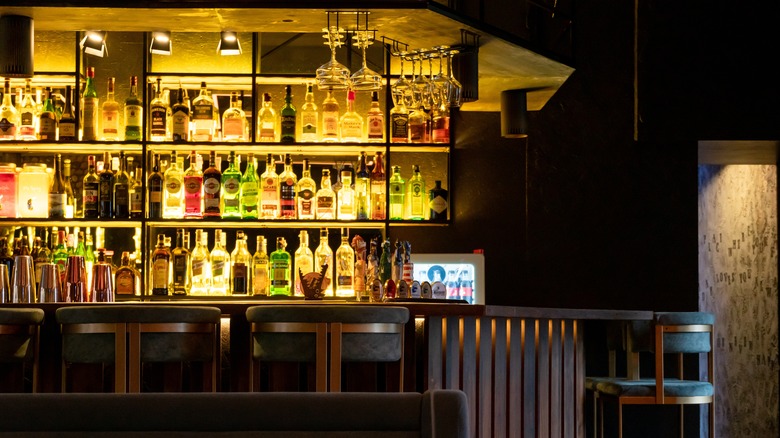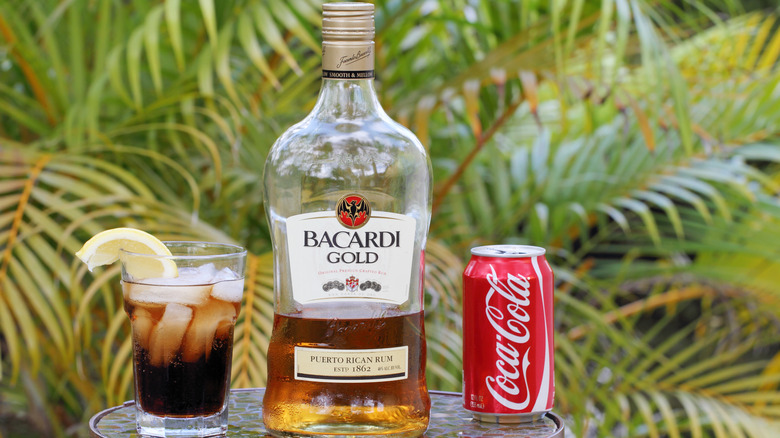The Actual Difference Between A Well, Call, And Top-Shelf Drink At The Bar
Gone are the days cheap drinks at a bar, especially if you're visiting a popular establishment or big city. However, knowing how to properly order your liquor and understand the quality of different alcohol offerings can help pinch a few pennies here and there. The words to know? Well, call, and top-shelf. Learning these few key words will not only improve your bar and cocktail ordering etiquette, but make for a better drinking experience overall.
Starting with the most obvious, top-shelf drinks are typically made with one of the highest quality liquors the bar has — thus raising the price. These can be a great splurge for a special occasion, particularly when taking shots, where the focus is on the liquor itself rather than a mixed drink. Some examples include Clase Azul tequila and Angel's Envy bourbon –and yes, these expensive bottles are most commonly stored on the highest shelves of the bar, hence the name.
On the opposite end of the spectrum, you have well drinks; these beverages use the cheapest types of liquor the bar has on hand. The name "well" is pulled from the same term that describes the area directly in front of the bartender, where ingredients are easily accessible. These are the bottles you'll see being used for most of the drinks people order, as they are convenient and the least expensive. Note that the quality won't be as good as top-shelf liquor, but there are quite a few brands of inexpensive tequilas or vodkas that are still worth buying. You'll also likely be served well alcohol by default, unless you specifically ask for something else.
What is a call drink?
Knowing the difference between well and top-shelf alcohol is a good starting point for mastering the financial aspect of ordering at a bar. But this final term is a bit more complicated, as it can apply to all kinds of liquor. A "call" drink is one that calls for a specific type of alcohol — so instead of a rum and Coke, you might ask for a Bacardi and Coke. In most cases, a call drink is associated with top-shelf liquor, because guests are likely to ask for a specific higher quality alcohol. However, the term doesn't have to lead to an expensive drink.
Even though top-shelf brands tend to be more recognizable, there are plenty of affordable alcohols that fall in between well and top-shelf for you to "call" on. Understanding which liquors you like (that are still within your price range) can help you customize your drink to your flavor preferences, and gives a better sense of the exact ingredients being mixed in without having to break the bank. This way, you can ask the bartender for a particular whiskey brand to pair with your old-fashioned, but it doesn't have to be as expensive as Maker's Mark. Remember that the prices of liquor and mixed drinks will vary depending on where you are, and not every bar will have every brand of liquor you might want. Even still, knowing these drinking terms will lead to a smoother ordering experience and a well-informed night out at the bar, whether you're at a local dive or a club across the world.


